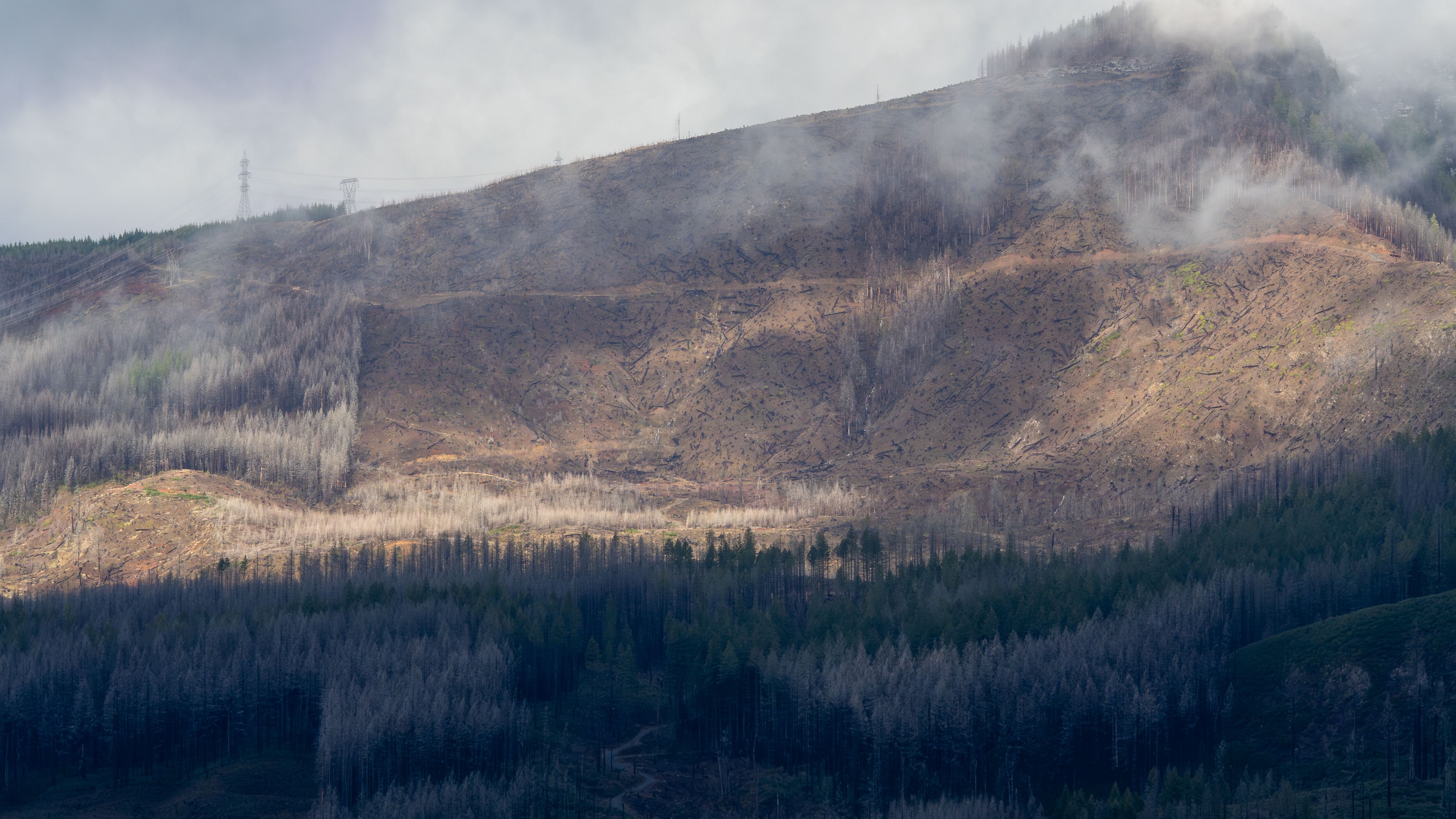A fire behavior scientist who was at the front lines of the deadly 2020 Santiam Canyon Fire is challenging the conclusions of a recently released report by the Oregon Department of Forestry.
The report determined that downed power lines played no role in the deadly blaze.
Instead, the report concluded, it was burning embers from the Beachie Creek Fire that were blown for miles by a fierce 70 mph east wind that ignited the new fires. The fire killed five and caused significant damage in the small Santiam Canyon towns of Gates, Lyons, Mill City and Mehama.
Dean Warner, an engineer and fire behavior expert with the Washington State Department of Natural Resources, says of the report: “That’s a pretty wild conclusion. I don’t understand it.”
The Forestry Department’s findings contradict a Multnomah County jury’s verdict in 2023 that PacifiCorp acted recklessly and willfully in its actions in the days leading up to the fire and during the Sept. 8, 2020, blaze. It found PacfiCorp guilty of gross negligence.
Cody Berne, a lawyer for the plaintiffs in the case, blasted the recent Forestry Department’s report. The department “disregarded weeks of evidence from the trial that proved PacifiCorp burned down the Santiam Canyon and that it behaved recklessly and willfully,” he said. “ODF apparently even ignored testimony from the federal government’s fire behavior expert, Dean Warner, who was in the Santiam Canyon, saw power lines start fires, and testified about them spreading. PacifiCorp’s fires drove him and hundreds of other firefighters out of the canyon.”
Indeed, Warner tells the Oregon Journalism Project that the Forestry Department’s conclusion defies common understanding of fire behavior.

“It’s true that there were extraordinary conditions that night,” Warner says. But embers are ephemeral. They burn only so long. “The general rule is that 2 miles is an extraordinary distance for embers to travel,” he says. “And, in this case, the embers would have had to travel at least 4 miles.”
The forestry agency stands by the report but wouldn’t respond to why the agency didn’t speak to Warner. “I would just like to reinforce that this is an independent, unbiased report that was created because ODF is statutorily obligated to investigate every fire that starts on ODF-protected land,” agency spokeswoman Jessica Neujahr said in an email.
Warner was part of a group of expert firefighters—known as Northwest Incident Management Team 13—sent to the area to fight the Beachie Creek Fire, which at the time was high in the Cascades near the Opal Creek Wilderness, more than 10 miles from Gates. Warner’s job was to determine where the fire would go, how fast it was moving, and how dangerous it would be for firefighters.
Warner knew the fierce winds forecast for Sept. 7 and 8 would push the fire westward. He was convinced the blaze would not reach the city.
But fire did reach Gates that night. At the time, the consensus view was that downed power lines were the cause.
Specifically, PacifiCorp power lines. The utility had decided not to turn off power to its lines that night, despite warnings from senior state officials. So when the wind grew strong enough to topple trees, which in turn hit power lines, the lines were hot and sparking.
At a press conference that evening, Team 13 leader Brian Gales said they were driven out of Gates by power-line fires.
The U.S. Forest Service, on Sept. 29, 2020, came to the same conclusion.
“Fire managers have now determined that at least 13 new fires were started between Detroit and Mehama from downed power lines during the peak of Monday’s wind event,” the Forest Service said in a Sept. 29, 2020, press release.
The Forest Service even changed the name of the blaze to the Santiam Canyon Fire, a recognition that it wasn’t just the Beachie Creek Fire causing all the damage.
But the recently released state report takes a completely different point of view. It maintains that it was flying embers, powered by the fierce east winds, that caused these so-called spot fires miles away.
“There were wildland fire starts caused by downed power lines in the Gates and Mill City area,” the report concedes. “All of these ignitions, which were investigated, were suppressed by local residents and/or local municipal fire departments. No evidence was found that these powerline ignitions significantly contributed to the spread of the fire in the Santiam Canyon.”
A day after the report was released, PacifiCorp attorneys filed a motion to dismiss the class action lawsuit. The judge ruled against the motion.
Warner says he has no desire to pick a fight with fellow foresters. But the Forestry Department’s findings just don’t add up. “I was there at Gates School, I saw the fires growing bigger,” he says. “I find it interesting that they worked on this report for four years and no one ever talked to me.”
This story was produced by the Oregon Journalism Project, a nonprofit investigative newsroom for the state of Oregon.
